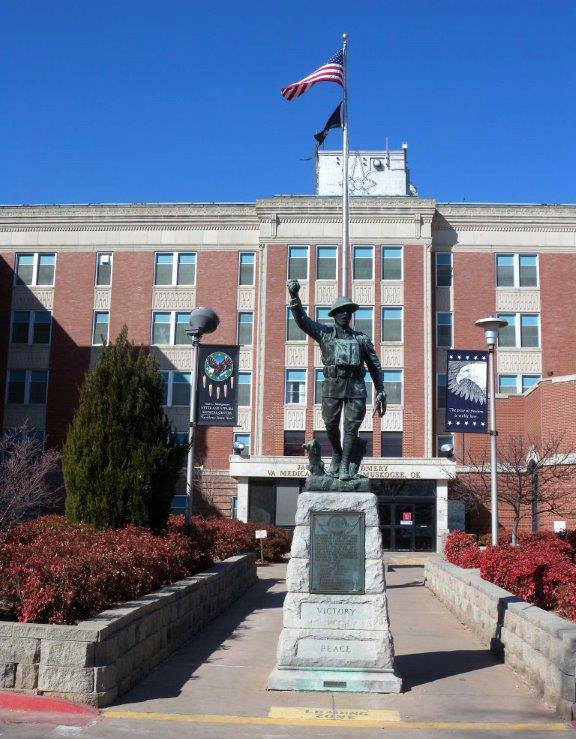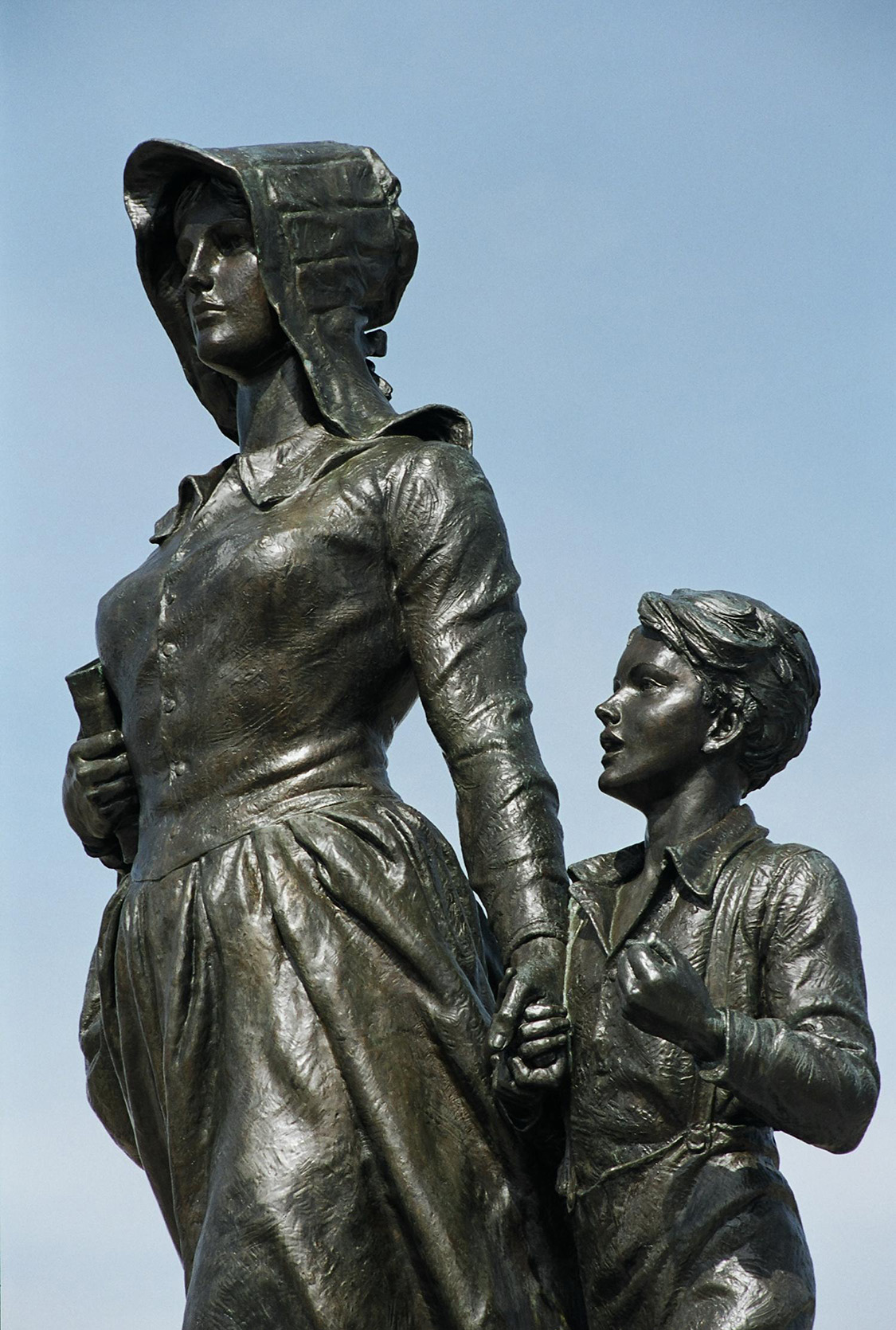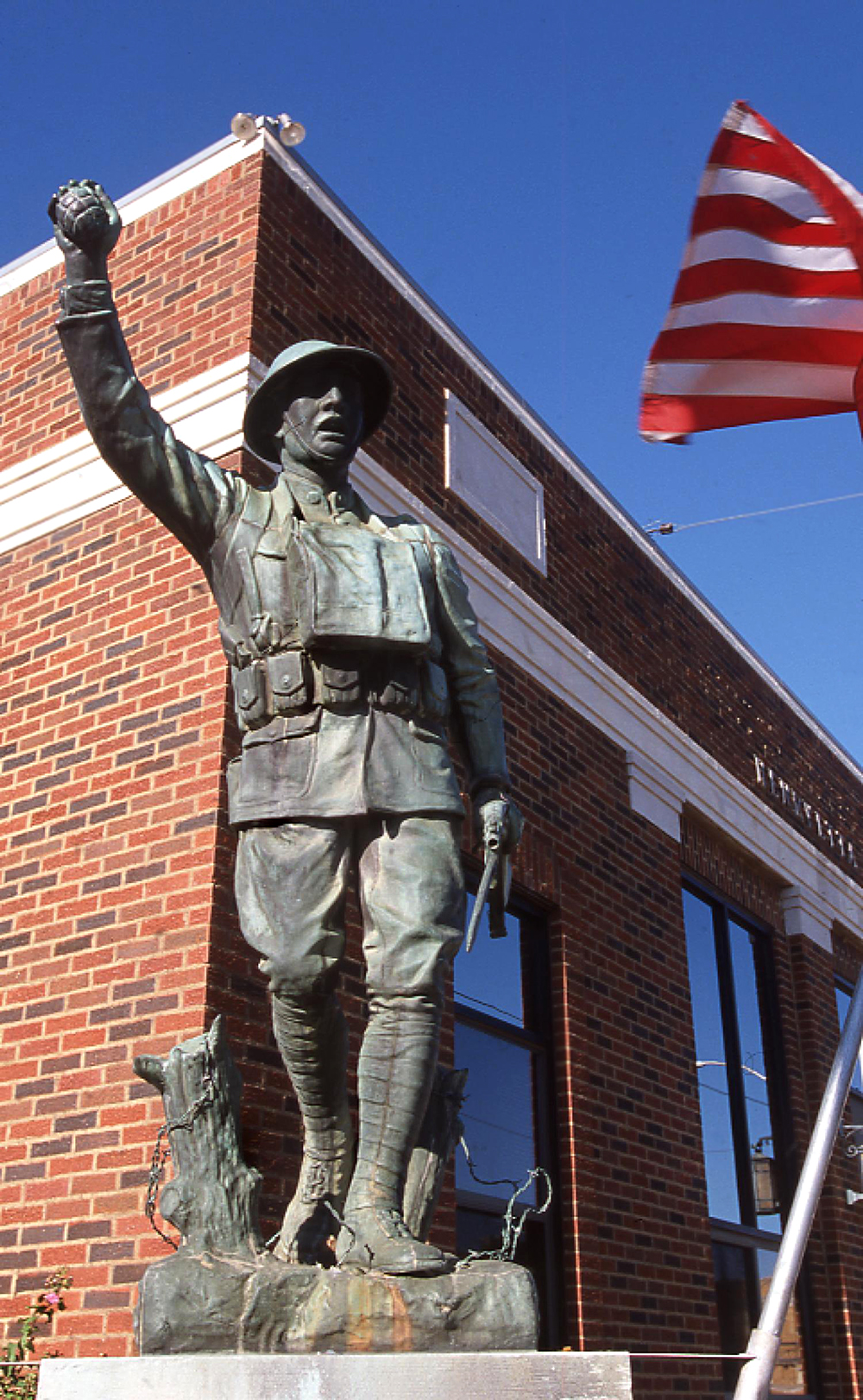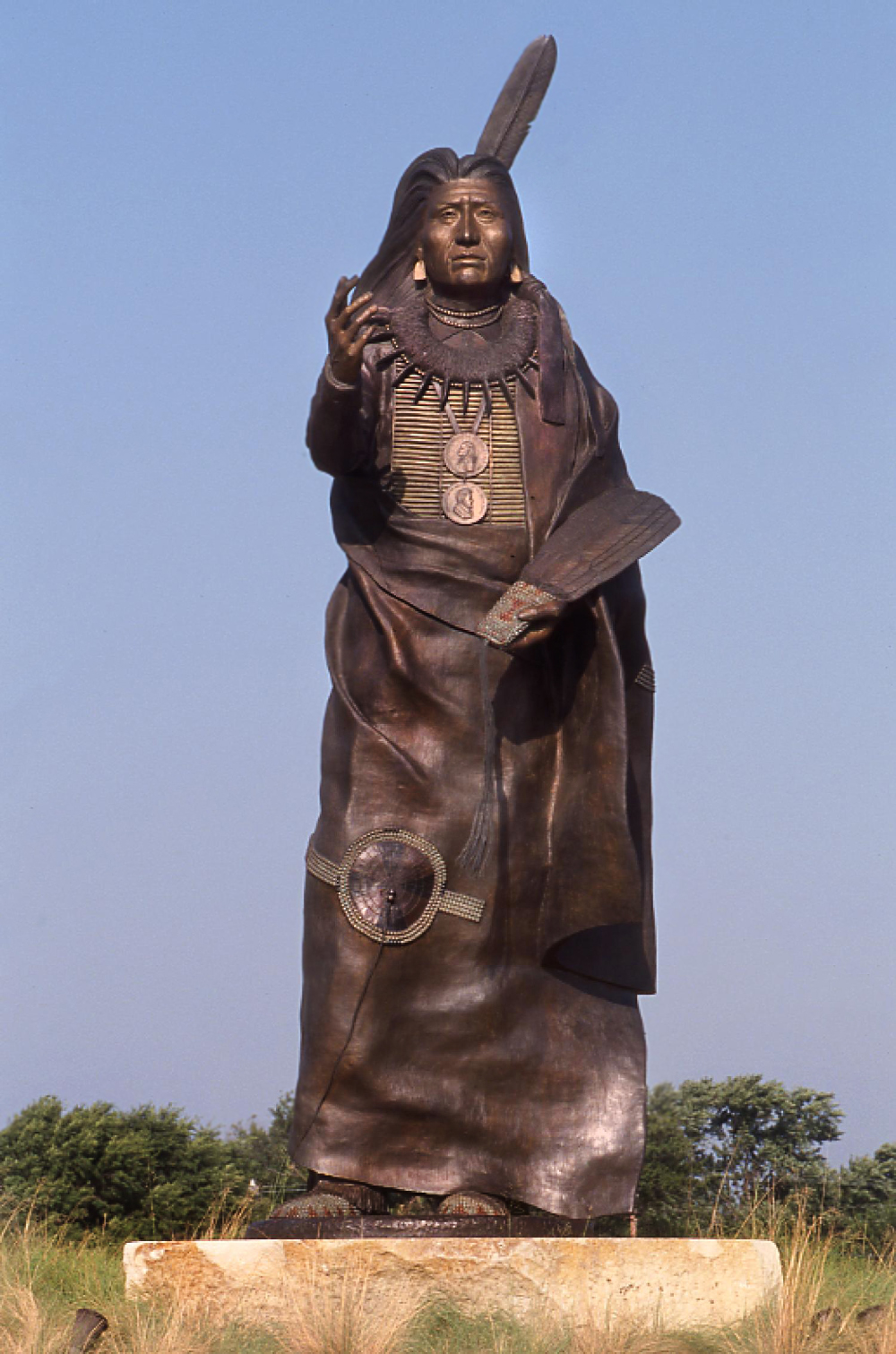
The Encyclopedia of Oklahoma History and Culture
SCULPTURE, OUTDOOR.
Oklahoma's many museums boast an impressive assortment of paintings and sculptures, but art lovers can also enjoy the outdoors and great art at the same time in dozens of Oklahoma towns. Literally hundreds of sculptures stand in public parks, near public buildings, on college campuses, and even on front lawns in residential districts. By the mid-1990s survey and research by the Smithsonian American Art Museum and the Oklahoma Museums Association had identified nearly four hundred outdoor installations in Oklahoma. They run the gamut of subject matter, material (stone, bronze, fiberglass, steel, wood), and style (abstract, representational, and novelty).
The most popular subjects depicted in Oklahoma's outdoor sculpture have been war veterans, pioneers, civic leaders, and American Indians. The statue of Roy V. Cashion, who was killed in the Spanish-American War, was erected in 1903 in Hennessey and may be the state's oldest outdoor sculpture. Also very popular after 1900 were sculptures depicting military men, including Spirit of the American Doughboy and Spirit of the American Navy, both pieces by E. M. Visquesney. These two works memorialize the hundreds of Oklahoma men who fought in World War I. The Spirit statues are the most common of all Oklahoma's outdoor sculptures, with examples found in nearly a dozen towns. At the Veteran's Memorial, near the Capitol in Oklahoma City, is Vietnam Veteran, by Jay O'Meilia and Bill Sowell. The Sooner State's pioneer past is well represented by Bryant Baker's Pioneer Woman, in Ponca City, Harold Holden's Crossing the Red, in Altus, Rich Muno's Pioneer Man, in Clinton, and Leonard McMurry's The 89er, in Oklahoma City. Public leadership is frequently honored as well, examples being McMurry's depictions of astronaut Tom Stafford in Weatherford and city manager Stanley Draper in Oklahoma City. Leonard McMurry's often-depicted Healing Hands remains on view at Tulsa's Oral Roberts University. The most-often depicted person in the state is Will Rogers, with statues in Claremore, Oologah, and elsewhere.
Works by American Indian artists include Oreland C. Joe's Chief Standing Bear, in Ponca City, and pieces by Allan Houser (Haozous), including As Long As the Waters Flow, at the Capitol, When Friends Meet, on the campus of Rogers University in Claremore, and Colonel Ernest Childers, in Broken Arrow. The National Hall of Fame for American Indians, in Anadarko, is an outdoor park with busts of important leaders of many tribes.
Abstract art has also been well represented in Oklahoma outdoor sculpture. At Lawton's Cameron University, outside the art department building and scattered around campus, reside works by nationally recognized artists, including David Deming, Nick Calcagno, and James Surls. Outside the University of Tulsa's Alexandre Hogue Gallery and outside the art department at Oklahoma University of Science and Arts, in Chickasha, are other installations of abstract pieces.
In Oklahoma City and Tulsa, city ordinances have for several years required that city-owned buildings install artworks either indoors or outdoors. In Tulsa, for example, fire stations, public libraries, and even the animal shelter are decorated with interesting abstract or representational pieces by a variety of artists and in a variety of materials ranging from brick to metal to fiberglass.
Novelty works, akin to folk art, also abound. For example, in Foyil, Ed Galloway built his Totem Pole Park, an installation of huge steel-and-concrete structures commemorating American Indians. In Catoosa the Blue Whale has attracted swimmers for several decades. In the late twentieth and early twenty-first centuries chain-saw wood carvings by Clayton Coss and others began to appear in parks and residential areas. As old trees died, carvers transformed them into various images, such as an American eagle (Bristow) and Chief Sapulpa (Sapulpa).
Sculpture parks have also added excitement to Oklahoma's built environment. For example, along the Arkansas River, just west of downtown Tulsa, Riverside Park has staged dozens of sculptures, including carved tree trunks by Clayton Coss, abstract works by Ann Tomlinson, and animal sculptures that are installed annually by the Nature Conservancy. In Oklahoma City numerous installations have been placed in the park along Grand Avenue, inside the city of Nichols Hills.
Characterized by variety, humor, and incredible creativity, outdoor sculpture gives a visual indication of the degree to which the artistic impulse has become a part of Oklahomans' everyday lives.
See Also
END OF THE TRAIL, FOLK ART, THE GUARDIAN, OKLAHOMA CAPITOL, PIONEER WOMAN









